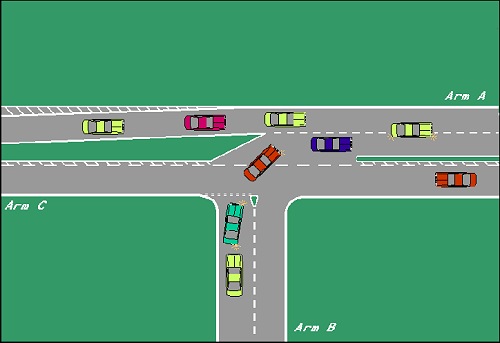The junction can be modelled by specifying the minor road (Arm B) demand flows and the measured geometry as normal. The main carriageway demand for arm A (both A -> C and A -> B) should also be specified as normal, but the demand on Arm C should be set to zero flow. The main carriageway width should be measured in the usual way except for the width on arm A which should exclude the width of the near-side lane which is in effect being ignored, e.g. if the widths are as follows: offside exit lane on Arm A = 3m; entry lane on Arm A = 3.2m; exit lane on Arm C = 2.8m; entry on arm C = 3.1m then the approach road half width, W = (3 + 3.2 + 2.8 + 3.1) / 2.

Note: PICADY may tend to underestimate the capacity of the minor arm as drivers KNOW they do not have to giveway to traffic travelling along the main carriageway from C -> A. Specifying zero flows on the main carriageway is not the same as there IS a difference between giving way to zero flows and not having to give-way at all. On the other hand the merging effect on the main carriageway downstream of the junction is likely to have a detrimental effect on the minor road capacity and hence the two effect MAY cancel each other out. If concerned about these effects the best option is to carry out site observations (if possible) and use them to calculate site-specific adjustment factors.